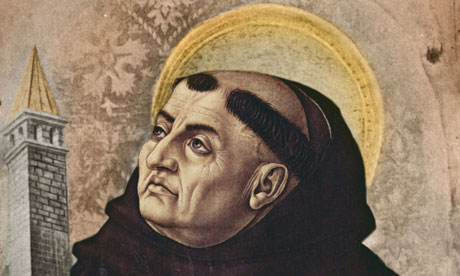
To condense the history of western thought to around 50,000 words is the literary equivalent of trying to reproduce the ceiling of the Sistine Chapel on the inside of a matchbox. So it is to writer and film-maker Stephen Trombley's tremendous credit that his intellectual miniaturisation, while inevitably losing almost all the detail, leaves very little out and renders most of the original characters and scenes distinctive and recognisable.
The book is a kind of history of philosophy plus, containing all the usual thinkers from the pre-Socratics to the post-structuralists. Most rival volumes, however, spend a long time in ancient Greece, then jump to 16th-century Europe, with a short sojourn in imperial Rome, a few words from Augustine, and a cup of medieval tea with Saints Anselm and Aquinas. It's a bit like reading the Bible by skipping all but a few Psalms and Proverbs between the Pentateuch and the Gospels.
No such lazy skipping for Trombley, who fills the gaps with a greater than usual emphasis on the place of religion in the development of western thought. Increasingly familiar is the role of the golden age of Islam in the development of philosophy, both in the transmission of ancient Greek texts to Europe and in its own innovations. More unusual is the extent to which Trombley discusses the development of Christian thought. This enables us to see the later French, German and Scottish enlightenments (no simplistic reduction to the Enlightenment here) as emerging from a gradual growth of the importance of the individual that has its roots in Christian theology.
This theme of the "liberation of the individual" is what comes closest to giving the book a central narrative. Trombley identifies Augustine's Confessions as "the first text in which the first-person singular voice, the I, comes into play" in spiritual and intellectual discourse. A thousand years later, this seed would flower in the Reformation's emphasis on the individual's direct relationship to God.
Trombley also makes space for the social and technological developments that nudged intellectual changes. For instance, the significance of printing and the availability of books in the vernacular, although widely acknowledged, is often skipped over in histories of ideas. Trombley has plenty of lesser-known examples, such as how the expulsion of the Jews from Spain in 1492 helped top up the intellectual resources of the Ottoman empire, thanks to Sultan Bayezid's offer of citizenship to the exiles.
Indeed, such is the breadth of reference in this book that even experts who might blanch at the cursory treatment of their specialised subjects are bound to come across numerous things they didn't know. These range from interesting trivia, such as the fact that the word "dunce" derives from a term of abuse for followers of the 13th-century scholastic Duns Scotus; to more significant revelations, such as ibn Qurra's argument that the world revolved around the sun, which predates Copernicus by six centuries. As for the medieval riddle: how many angels can you fit on a pin head? The answer, according to Aquinas, is infinitely many, since "only a body fills a space" and angels are not bodies.
Given the absurdly ambitious range of the books, there are bound to be simplifications, some of which are misleading, if not actually incorrect. A more avoidable flaw is that, in the desire to cram as much in as possible, the text does sometimes resort to lists ("Nietzsche's key works include …") On other occasions, an idea is presented so briefly that it just isn't clear, or it becomes a kind of tease.
The only real gripe I have, however, is the sometimes gratuitous inclusion of boxed quotations, many of which do not enhance the main text at all. Most bizarre is a single sentence from John Searle, which reads: "I want to explain how certain essential parts of mind, language and social reality work and how they form a coherent whole." Sorry, John, no time.
Trombley's history is too quick and large to be authoritative and comprehensive. But for an overview of the terrain, this includes more landmarks per square inch than most maps of this scale provide and suggests routes for many fascinating philosophical journeys.

